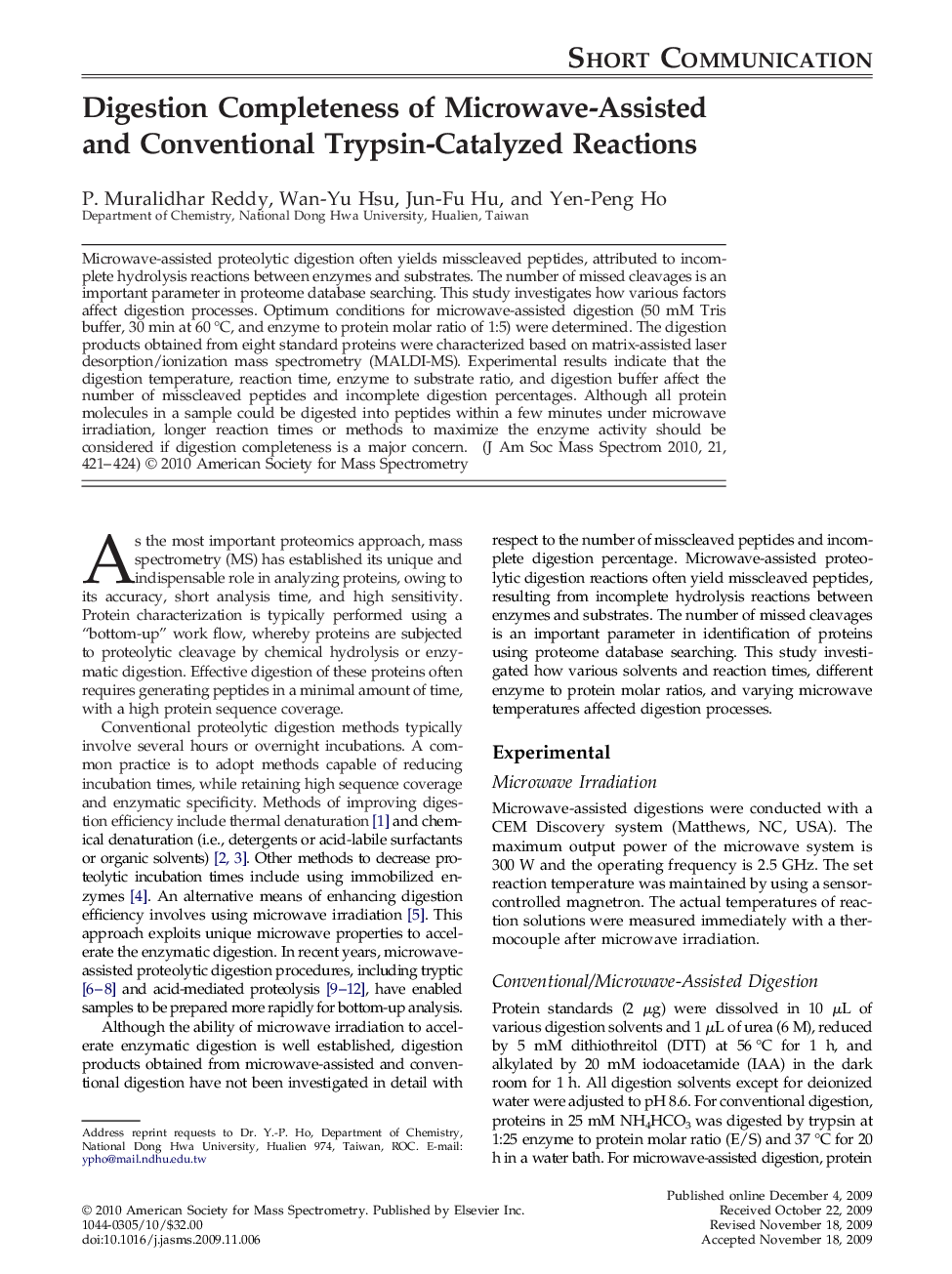| Article ID | Journal | Published Year | Pages | File Type |
|---|---|---|---|---|
| 1196351 | Journal of the American Society for Mass Spectrometry | 2010 | 4 Pages |
Microwave-assisted proteolytic digestion often yields misscleaved peptides, attributed to incomplete hydrolysis reactions between enzymes and substrates. The number of missed cleavages is an important parameter in proteome database searching. This study investigates how various factors affect digestion processes. Optimum conditions for microwave-assisted digestion (50 mM Tris buffer, 30 min at 60 °C, and enzyme to protein molar ratio of 1:5) were determined. The digestion products obtained from eight standard proteins were characterized based on matrix-assisted laser desorption/ionization mass spectrometry (MALDI-MS). Experimental results indicate that the digestion temperature, reaction time, enzyme to substrate ratio, and digestion buffer affect the number of misscleaved peptides and incomplete digestion percentages. Although all protein molecules in a sample could be digested into peptides within a few minutes under microwave irradiation, longer reaction times or methods to maximize the enzyme activity should be considered if digestion completeness is a major concern.
Graphical AbstractInvestigation of the effect of various solvents and reaction times, different enzyme to protein molar ratios, and varying microwave temperatures on digestion processes.Figure optionsDownload full-size imageDownload high-quality image (117 K)Download as PowerPoint slide
